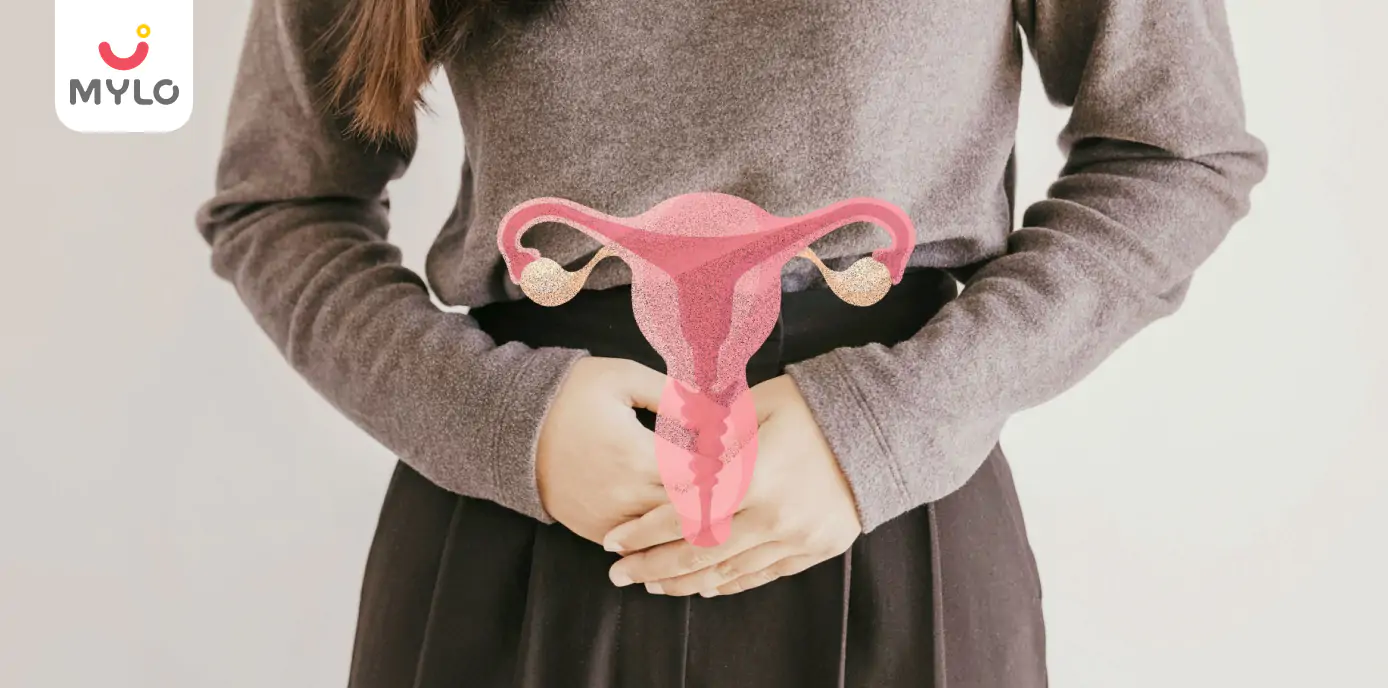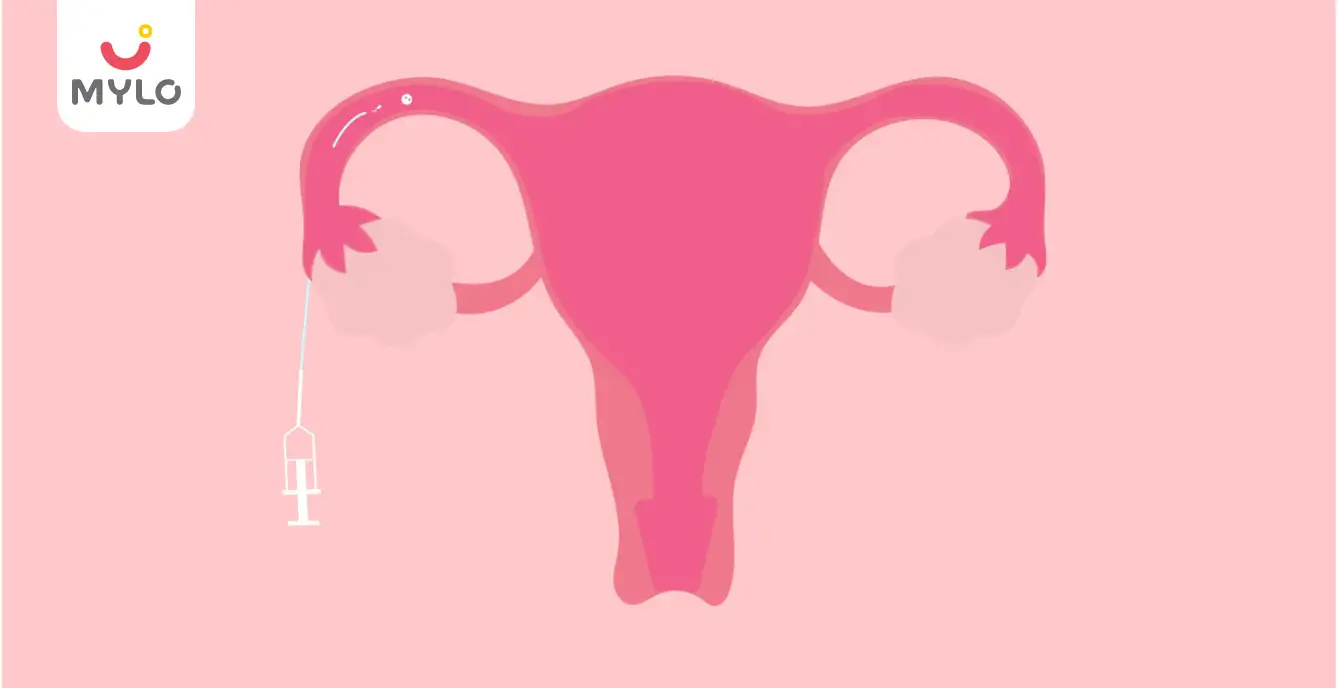Home

Fibroids

Myomectomy: A Comprehensive Guide to Uterine Fibroid Removal Surgery
In this Article

Fibroids
Myomectomy: A Comprehensive Guide to Uterine Fibroid Removal Surgery
Updated on 7 September 2023



Medically Reviewed by
Dr. Shruti Tanwar
C-section & gynae problems - MBBS| MS (OBS & Gynae)
View Profile

A sudden change in menstrual cycle made Neena anxious about her well-being. She wasted no time visiting her gynecologist who after carefully examining her found out that she was suffering from uterine fibroids. These unwelcome guests brought pain and uncertainty, casting a shadow over her dreams of a blissful life. But amidst the darkness, a ray of hope emerged- myomectomy.
Through this transformative procedure, she bid farewell to the fibroids and embarked on a new chapter of healing and possibility. Now, let us begin this comprehensive guide to uterine fibroid removal surgery that promises to empower and inspire those facing a similar battle.
Myomectomy Meaning: What is it?
Myomectomy is a surgical procedure that involves the removal of uterine fibroids, which are non-cancerous growths that develop in the uterus. It is like a targeted intervention to eliminate these troublesome fibroids, providing relief from the symptoms they may cause. By removing the fibroids, myomectomy aims to restore the normal function of the uterus and improve overall well-being.
What is the Purpose of Myomectomy Surgery?
Here are the key points regarding the purpose of a fibroid removal surgery:
1. Remove uterine fibroids
The main purpose of myomectomy is to surgically remove uterine fibroids, which are non-cancerous growths in the uterus.
2. Alleviate symptoms
Myomectomy aims to relieve the symptoms caused by fibroids, such as heavy menstrual bleeding, pelvic pain, and pressure on nearby organs.
3. Improve fertility
For women who desire to conceive, myomectomy can enhance fertility by removing fibroids that may interfere with conception or cause complications during pregnancy.
4. Preserve the uterus
Unlike a hysterectomy, which involves removing the entire uterus, myomectomy allows the preservation of the uterus.
5. Enhance quality of life
By removing fibroids and alleviating associated symptoms, myomectomy can significantly improve a woman's quality of life, allowing her to engage in daily activities without the discomfort and limitations caused by fibroids.
6. Personalized approach
The purpose of myomectomy varies for each individual, as it depends on factors such as the size, number, and location of the fibroids, as well as the woman's reproductive goals and overall health.
Types of Myomectomy Surgery
There are several types of fibroid removal surgery, each with its own approach and technique. Here are the common types:
1. Abdominal Myomectomy
This is the traditional and most invasive type of myomectomy. It involves making an incision in the lower abdomen to access the uterus.
2. Laparoscopic Myomectomy
This is a minimally invasive procedure that uses small incisions and specialized instruments. A laparoscope, a thin tube with a camera, is inserted through a small incision to visualize the uterus and fibroids.
3. Hysteroscopic Myomectomy
This procedure is suitable for fibroids that are located inside the uterine cavity. A hysteroscope, a thin tube with a camera, is inserted through the vagina and cervix into the uterus. The fibroids are then removed or resected using specialized instruments inserted through the hysteroscope.
4. Robotic-Assisted Myomectomy
This type of myomectomy uses robotic technology to assist the surgeon during the procedure. The surgeon controls robotic arms that hold and manipulate the instruments. Robotic-assisted myomectomy offers enhanced precision and dexterity compared to traditional laparoscopic surgery.
You may also like: Laparoscopic Ovarian Drilling: A Safe and Effective Solution for PCOS-Related Infertility
Preparing for a Myomectomy
You can prepare for a myomectomy surgery in following ways:
1. Consultation
Schedule an appointment with your gynecologist or surgeon to discuss your condition and the need for myomectomy.
2. Pre-operative instructions
Your healthcare provider will provide specific instructions to follow before the surgery. This may include fasting for a certain period of time, avoiding certain medications or supplements, and stopping smoking if applicable.
3. Pre-surgical tests
You may be required to undergo certain pre-surgical tests such as blood tests, urine analysis, and imaging (ultrasound, MRI) to assess the size and location of the fibroids and evaluate your overall health.
4. Medication adjustments
Your healthcare provider may advise you to temporarily stop or adjust certain medications, such as blood thinners, before the surgery. It is important to follow their instructions and inform them about all the medications you are currently taking.
5. Arrangements for the surgery day
Plan for transportation to and from the hospital or surgical center on the day of the surgery. Ensure you have someone available to accompany you and assist with post-operative care if needed.
6. Emotional support
It can be helpful to seek emotional support from friends, family, or support groups during the preparation period. Talking to others who have undergone similar procedures can provide reassurance and guidance.
You may also like: Dilation and Curettage (D&C): Procedure, Risks & Benefits
The Myomectomy Surgical Procedure
Myomectomy is a surgical procedure aimed at removing uterine fibroids while preserving the uterus. The specific technique used may vary depending on the size, number, and location of the fibroids, as well as the surgeon's expertise.
Here is an overview of the fibroid removal surgery:
1. Anesthesia
Before the surgery, you will be given anesthesia to ensure you are comfortable and pain-free throughout the procedure.
2. Incision
The surgeon will make an incision in the lower abdomen or, in some cases, perform a minimally invasive procedure using small incisions.
3. Fibroid removal
The surgeon will carefully locate and remove the fibroids from the uterus. The technique may involve cutting the fibroids out of the uterine wall (intramural fibroids), removing fibroids on stalks (pedunculated fibroids), or separating fibroids from the uterine lining (submucosal fibroids).
4. Uterine repair
After removing the fibroids, the surgeon will repair the uterine wall to ensure proper healing and minimize the risk of complications.
5. Closure
The surgeon will close the incision using stitches or surgical staples, depending on the type of incision made.
6. Recovery
After the surgery, you will be closely monitored in a recovery area. Depending on the type of anesthesia and the extent of the procedure, you may need to stay in the hospital for a day or longer.
You may also like: Top 10 Health Issues Related To Women
Recovery After Myomectomy Surgery
The recovery period following a myomectomy can vary from person to person, depending on factors such as the extent of the procedure, the individual's overall health, and the type of incision made. Here are some key points to consider about the recovery process:
1. Hospital stay
The length of the hospital stay will depend on the specific circumstances of your surgery.
2. Pain management
You may experience some pain or discomfort after the surgery. Your healthcare team will provide pain medications to help manage any post-operative pain.
3. Physical activity
Your healthcare provider will provide specific guidelines on when you can resume normal activities and return to work.
4. Wound care
You will receive instructions on how to care for your incision site to promote healing and minimize the risk of infection.
5. Follow-up appointments
Your healthcare provider will schedule follow-up appointments to monitor your recovery and address any concerns or questions you may have.
6. Resuming fertility and pregnancy
If your goal is to conceive after myomectomy, your healthcare provider will discuss the appropriate timeline and provide guidance on when it is safe to start trying to conceive.
Risks and Complications of Myomectomy Surgery
While fibroid removal surgery is generally considered a safe procedure, like any surgical intervention, it carries certain risks and potential complications. It's important to be aware of these possibilities, although they occur infrequently.
- Bleeding
- Infection
- Adhesion formation
- Injury to surrounding organs
- Recurrence of fibroids
- Anesthesia risks
- Blood clots
If you experience any such complication after the surgery, you must visit your doctor immediately.
Final Thoughts
In conclusion, myomectomy is a surgical procedure designed to remove uterine fibroids while preserving the uterus. A fibroid removal surgery can alleviate symptoms such as heavy menstrual bleeding, pelvic pain, and pressure. Whether you are seeking relief from bothersome symptoms or hoping to preserve fertility, myomectomy offers a viable solution.
References
- Rakotomahenina, H., Rajaonarison, J., Wong, L., & Brun, J.-L. (2017). Myomectomy: technique and current indications. Minerva Obstetrics and Gynecology
- Stoica, R., Bistriceanu, I., Sima, R., & Iordache, N. (2014). Laparoscopic myomectomy. Journal of Medicine and Life





Medically Reviewed by
Dr. Shruti Tanwar
C-section & gynae problems - MBBS| MS (OBS & Gynae)
View Profile


Written by
Ravish Goyal
Official account of Mylo Editor
Read MoreGet baby's diet chart, and growth tips

Related Articles
Related Questions
Influenza and boostrix injection kisiko laga hai kya 8 month pregnancy me and q lagta hai ye plz reply me

Hai.... My last period was in feb 24. I tested in 40 th day morning 3:30 .. That is faint line .. I conculed mylo thz app also.... And I asked tha dr wait for 3 to 5 days ... Im also waiting ... Then I test today 4:15 test is sooooo faint ... And I feel in ma body no pregnancy symptoms. What can I do .

Baby kicks KB Marta hai Plz tell mi

PCOD kya hota hai

How to detect pcos

Related Topics
RECENTLY PUBLISHED ARTICLES
our most recent articles

Menstrual Cycle
The Hormonal Dance: Understanding Which Hormones Regulate Menstrual Cycle

Cold & Cough
7 home remedies to cure cough and cold in infants

Conception
How to Increase Endometrial Thickness: Your Guide to Science-Backed Tips

Conception
Endometrial Scratching: The Ultimate Guide to Meaning, Benefits and Impact on Conception

Bathing
The Ultimate Guide to Buying a Baby Bath Tub for New Parents

Diet & Nutrition
Strawberry in Pregnancy: Why Should This Fruit Be on Your Pregnancy Platter?
- Benefits of Wearing a Pregnancy Belt Before Delivery
- PCOS Treatment in Homeopathy: The Ultimate Guide to Natural Remedies
- Manjistha: Ayurveda's Best-Kept Secret for Health and Beauty
- Metformin for PCOS: How This Medication Can Help Regulate Hormonal Imbalances
- 5 Tips on How to Get Pregnant When You Are Fat
- Do Antibiotics Affect Fertility: Debunking Common Myths and Misconceptions
- Disadvantages of Releasing Sperm Daily: Debunking Common Myths
- Varicocele Surgery Cost: What You Need to Know Before You Go Under the Knife
- Testicular Pain: Don't Ignore, Know When to Seek Medical Attention
- PCOS with Regular Periods: Understanding the Symptoms and Implications
- Bulky Uterus: What You Need to Know About this Common Gynecological Issue
- Mylo Baby Wipes Review
- PCOS Treatment in Ayurveda: The Ultimate Guide to Natural Treatment Options
- PCOS Acne: The Ultimate Guide to Causes, Treatment and Management


AWARDS AND RECOGNITION

Mylo wins Forbes D2C Disruptor award

Mylo wins The Economic Times Promising Brands 2022
AS SEEN IN
















- Mylo Care: Effective and science-backed personal care and wellness solutions for a joyful you.
- Mylo Baby: Science-backed, gentle and effective personal care & hygiene range for your little one.
- Mylo Community: Trusted and empathetic community of 10mn+ parents and experts.
Product Categories
baby carrier | baby soap | baby wipes | stretch marks cream | baby cream | baby shampoo | baby massage oil | baby hair oil | stretch marks oil | baby body wash | baby powder | baby lotion | diaper rash cream | newborn diapers | teether | baby kajal | baby diapers | cloth diapers |








